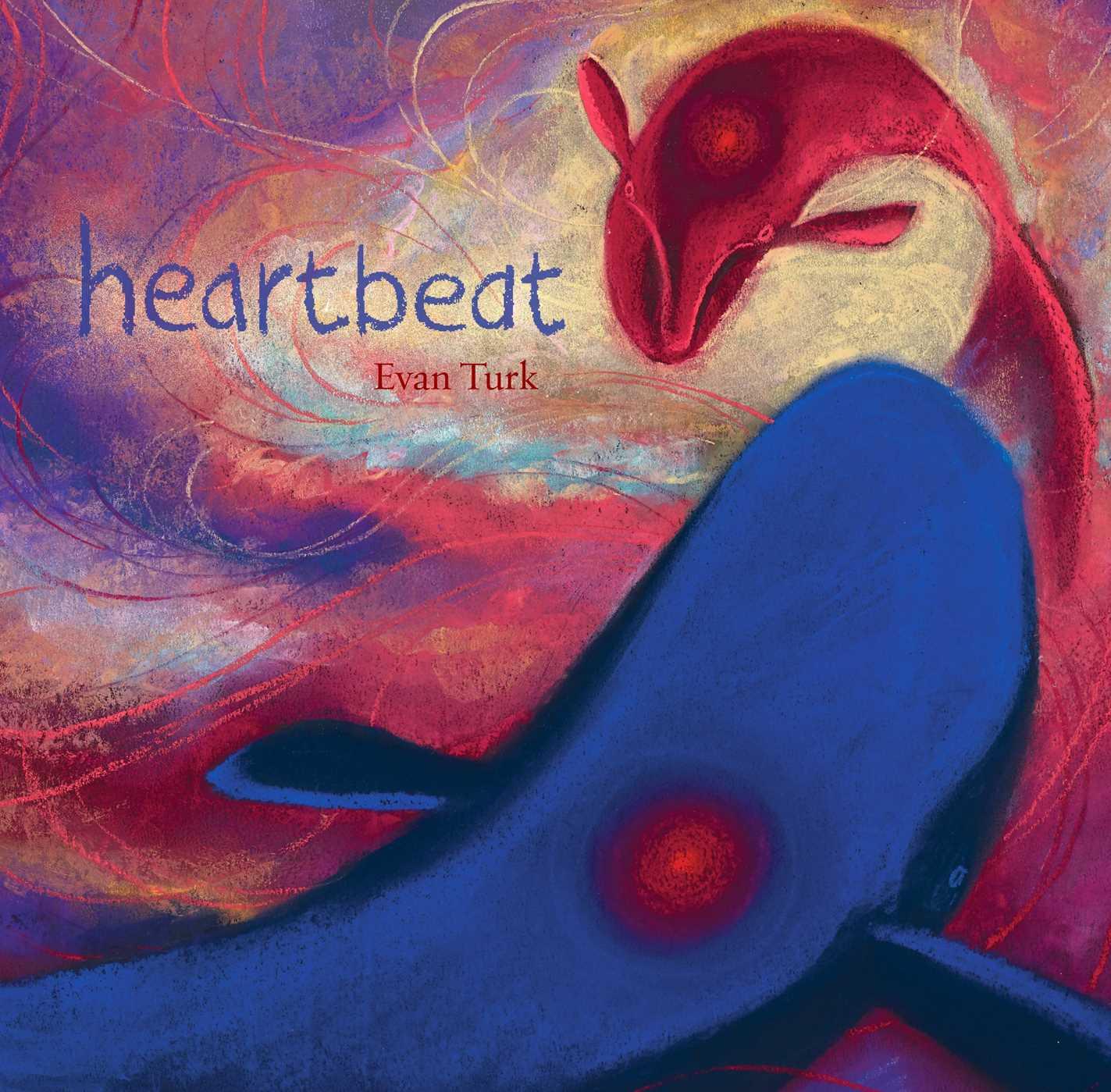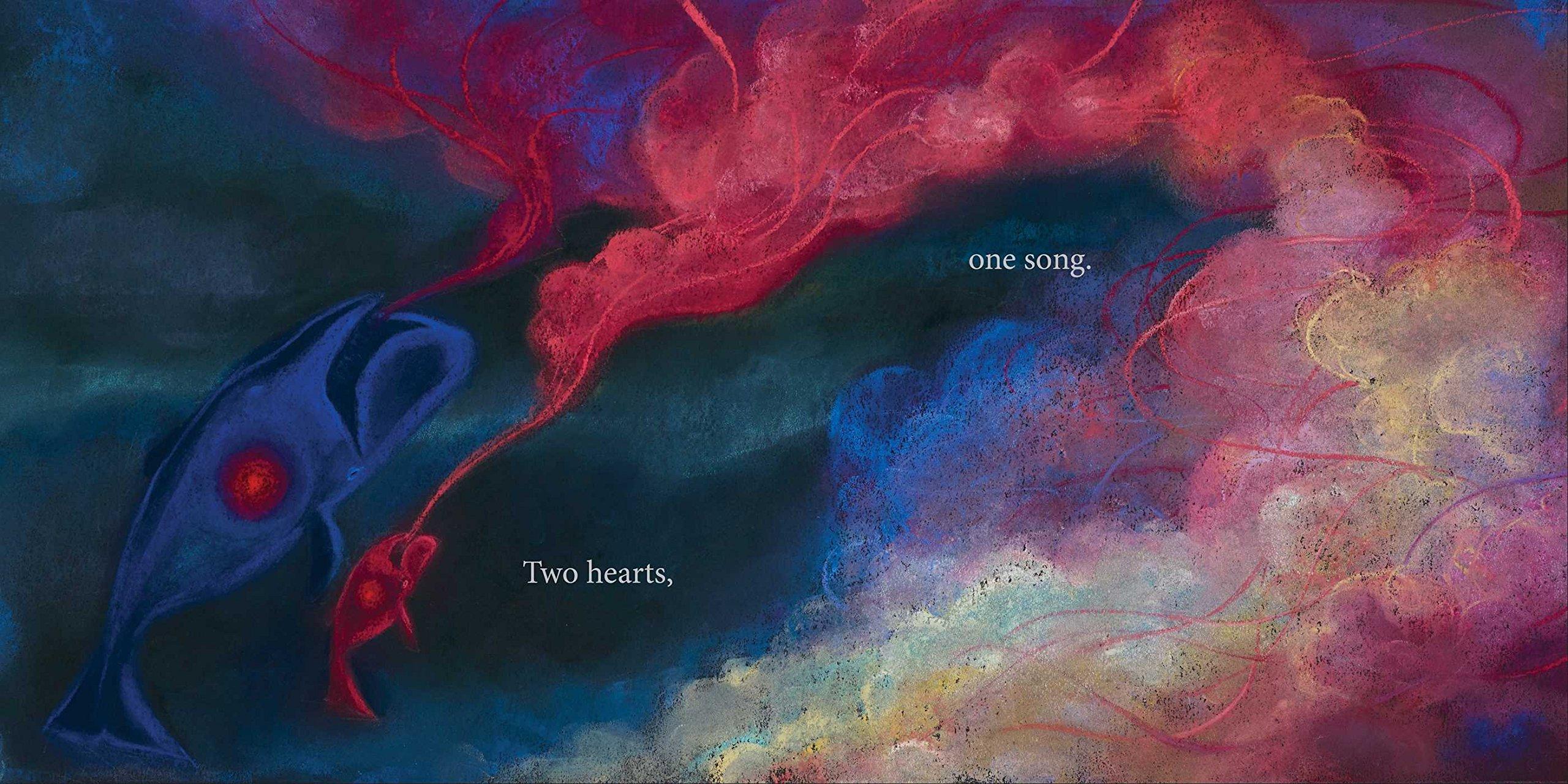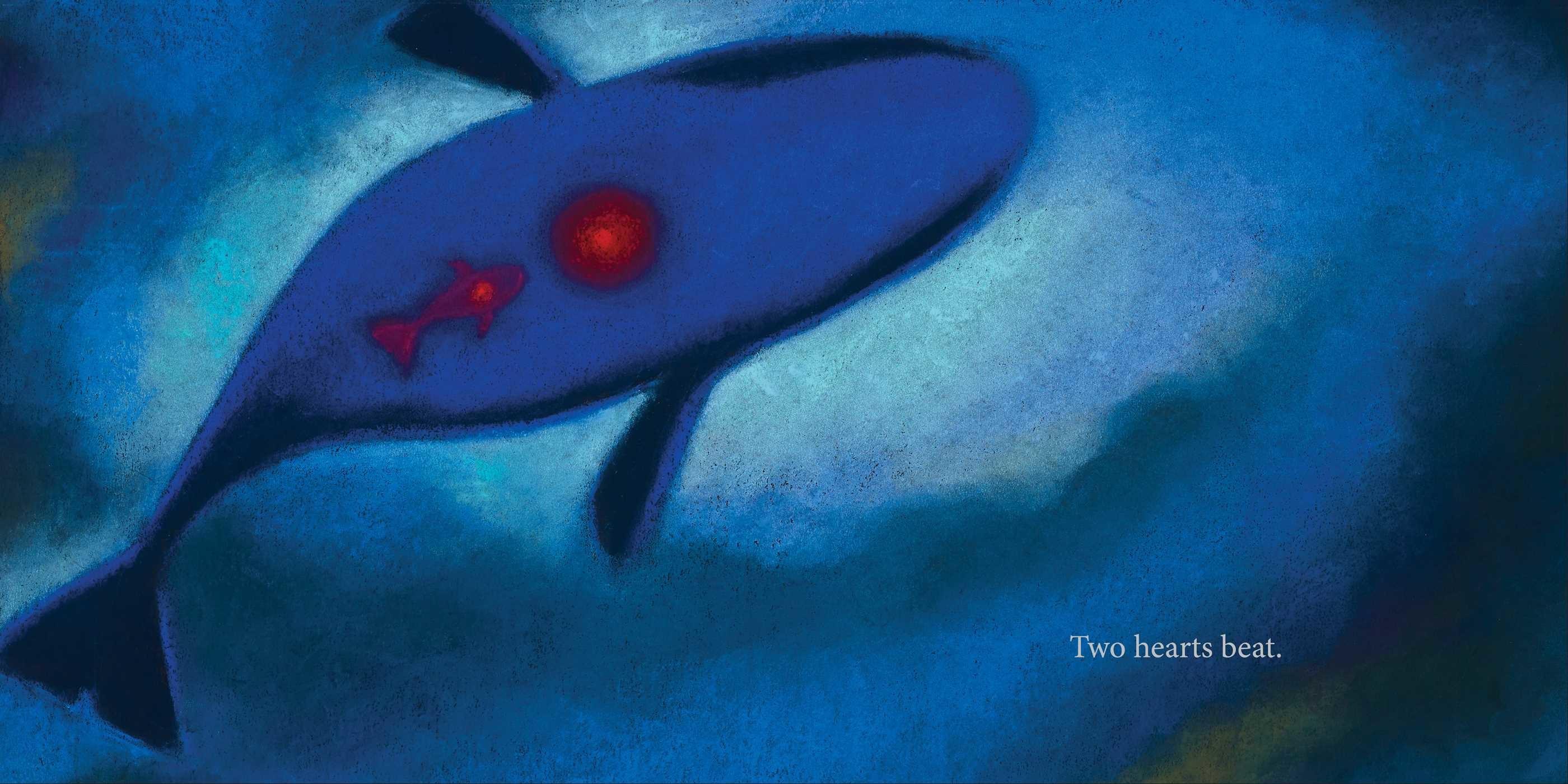Posted by Casey on Friday, Dec 14, 2018
 This week's Mock Caldecott selection is Evan Turk's "Heartbeat " . In this lovely tribute to the majesty of whales, we follow an orphaned whale calf through nearly two hundred years of human development. From whale oil candles and machine gun oil to the first images of Earth from space and sound clips on the Voyager, it is no secret that these creatures have had a vast impact on our shared history.
This week's Mock Caldecott selection is Evan Turk's "Heartbeat " . In this lovely tribute to the majesty of whales, we follow an orphaned whale calf through nearly two hundred years of human development. From whale oil candles and machine gun oil to the first images of Earth from space and sound clips on the Voyager, it is no secret that these creatures have had a vast impact on our shared history.
https://www.youtube.com/watch?time_continue=6&v=FKcT9TNZCrg
The book opens on inky black end papers that are broken by cloud-like wisps of color ranging from true blues through deep reds and yellows. The narrative opener is a circular pulse of red and blue that spans the gutter and breaks apart the single word on the spread, "heart......beat". Because of the deep black endsheets this pulse is brilliant, like a star bursting to life. Overall, the world of the whales is soft and elegant, with colors and shapes that bleed together, just as their joint song seeps through the pages, inundating their universe with love.

This is starkly interrupted by human intervention in the form of a large, white harpoon striking the page and the mother whale. From this moment, we see a world devoid of color with sharp lines and high contrast, where the utility of whales is highlighted through the shapes of human inventions. The orphaned whale moves through this sea of inventions, witnessing many of the major historical touchpoints within the last two hundred years. Throughout this movement through time, our orphaned whale has an emptiness, where the heartbeat once was, and she sings her song alone. When the whale encounters a young girl who echoes her song, this void begins to fill and the world once again becomes a place of color, light, and love.
The pulse that we see and hear from the outset, before we open the book if you look under the dust jacket, becomes the heartbeat of the narrative. Turk masterfully uses both color and spacing within the book to dictate its pacing: the word choice and placement of words on the page is also reflective of a heartbeat. He often uses two monosyllabic words next to one another like "two hearts, one song". When the two worlds collide, the mother whale's "beat, beat" changes color and spacing as her heart slows. Even when the orphaned whale is traveling through time and human invention the rhythm of the language is reflective of a beating heart--"One million guns shot, bombs dropped, mouths fed, lives lost."
The end of this narrative is where Turk's design and pacing really shine. As all of humanity raises its voice in song and the universe rings with the sound and color of our singular heartbeat, we see the two whales again, linked in the universal sea by that which links us all. Not only is Turk's work timely and important in terms of understanding historical human impact on our planet, but it is stunningly rendered. His author's note is a great place to start the conversation about whaling and the state of our oceans as well as giving further insight into his artistic choices. Check out this interview for more information about how he made this book as well as some early concept sketches.
What do you think? Is Heartbeat the most distinguished picture book of 2018? Be sure to cast your vote for ICPL's 2019 mock Caldecott by January 21st.




Add new comment